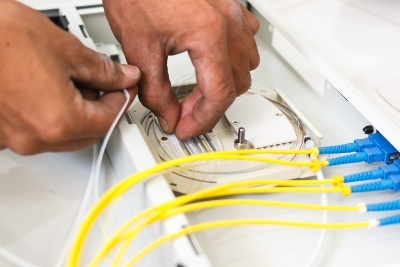These days, fiber optic cables capture multiple areas of our life. They are widely used in computer networking, Internet technologies, the automobile industry, cable television, telephone, etc. Thus, careful testing in fiber cable installation appears as a primary practice for better network performance. However, signal losses in optical wires can promote unreliable data transfer. In this article, we`ll find out what fiber optic loss is and how to reduce the losses in optical fiber.
Everything you need to know about the loss in optical fiber
Generally, fiber loss, also known as attenuation loss or fiber optic attenuation, refers to the amount of light loss between output and input. Losses in optical fiber are associated with different causes, such as loss in a connector or cable bending. Depending on whether operating conditions or inner fiber features provoke the loss, optical losses in fiber can be divided into intrinsic and extrinsic. The first type of optical fiber loss is related to absorption, dispersion, and other losses, while the second type typically contains losses in connectors, bending, etc.
Most fiber losses occur between the final node and the network terminal of the clients, and splitters can significantly influence additional loss in these network areas. Fiber connectors and other passive elements feature less loss compared to splitters. Specialists use terms insertion loss and return loss when evaluating the attenuation effects of such components.
Insertion loss
Insertion loss is related to the amount of light lost within two points in the fiber wire. Poorly manufactured connectors, contamination, and poor alignment can cause insertion loss in the optical fiber connected or spliced together.
Return loss
Affecting the entire network’s performance, return losses are determined as the measurement of signal that is reflected by its source because of a mismatch of impedance. High return loss might mean worse transmitting via a network.
Tips to eliminate fiber loss in a network
To deal with the gradual performance degradation, you need to leave a sufficient margin. This practice tends to help you provide the power output of light in terms of receiver sensitivity. Furthermore, if you wonder how to reduce optical loss in your network, follow the following tips.
To begin with, be sure your network is equipped with high-quality cables that stand by the same list of features. Next, reducing fiber loss can be related to utilizing clean connectors. Keep in mind that these connectors should also be sufficiently reliable. Your best bet is to keep insertion loss less than 0.3dB, while other losses should not be higher than 0.2dB.
Another nice consideration for eliminating network fiber loss is installing additional protection from external factors. Anti-corrosion, electrical, and anti-mechanical protective measures are ideal for fiber optic cables. Make sure a network has as few connections and splices as possible – this is also another pledge for minimizing fiber losses.

